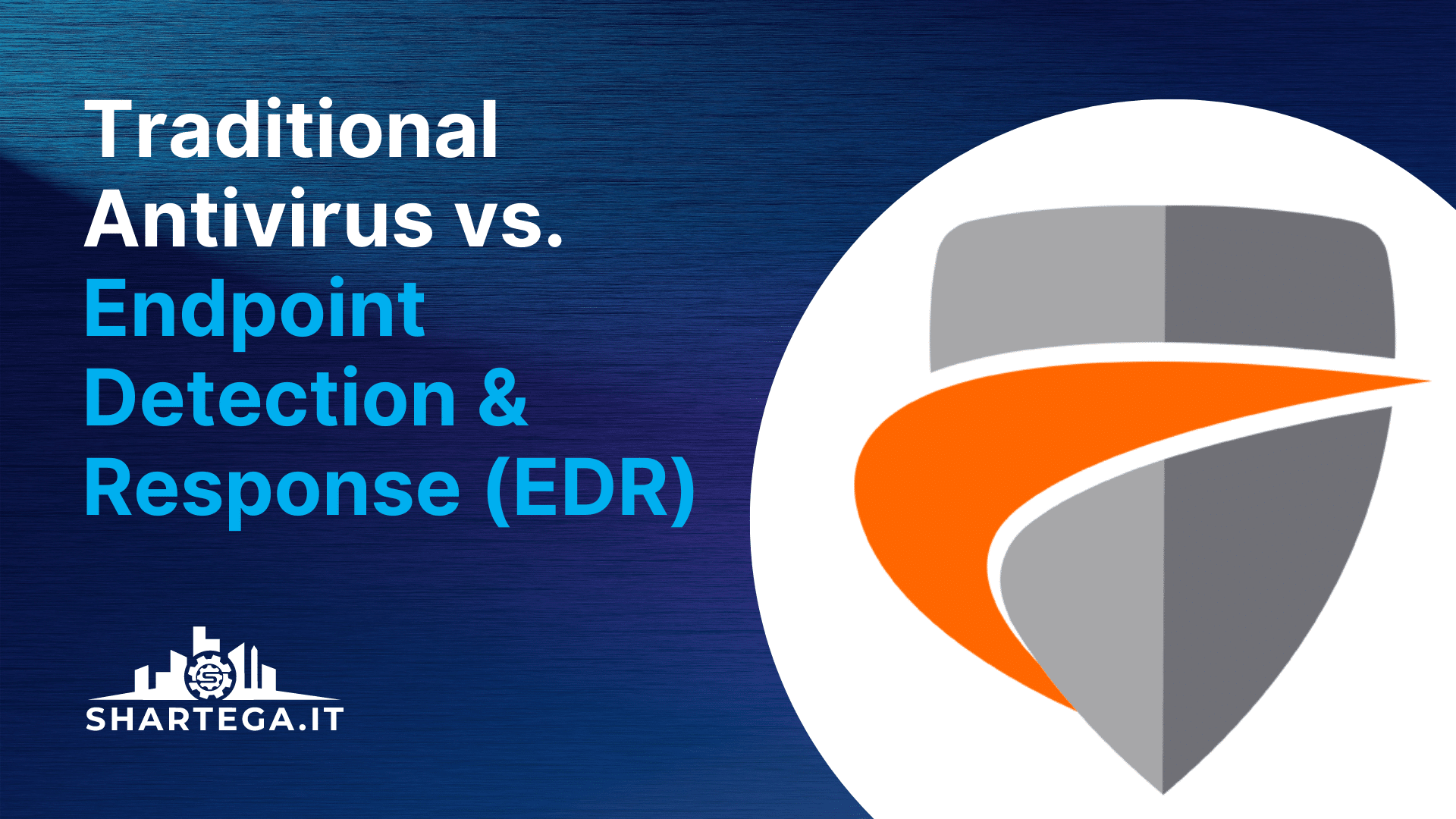Cybersecurity is a critical aspect for organizations of all sizes, and it is essential to keep up with the latest threats and vulnerabilities that can harm the network. One of the most significant trends in the cybersecurity world is Endpoint Detection and Response (EDR).
EDR vs. Antivirus: What's the Difference?
Antivirus software is designed to detect and prevent malware from infecting a device. EDR, on the other hand, is designed to detect, analyze, and respond to advanced threats that may not be detected by traditional antivirus solutions.
While antivirus software is an essential component of endpoint security, it has limitations when it comes to protecting against advanced threats. EDR solutions offer a more comprehensive approach to endpoint security, providing organizations with real-time protection against a wide range of potential threats.
Do I Need To Use EDR and Antivirus Together?
Antivirus software provides protection against known malware threats and can effectively prevent and remove most of the known threats. However, it might not be able to detect and respond to newer, more sophisticated threats that are emerging every day. EDR software, on the other hand, provides real-time monitoring and protection and can quickly detect and respond to new and unknown threats.
When used together, antivirus and EDR software provide a multi-layered approach to security, offering the best possible protection against cyber-attacks. Antivirus software helps to prevent and remove known threats, while EDR software detects and responds to new and unknown threats. In short, both software work together to provide a comprehensive security solution.
What is Endpoint Detection and Response (EDR)?
EDR is a proactive approach to endpoint security that uses advanced techniques to detect, analyze, and respond to threats on the endpoint. It is a combination of security technologies, threat intelligence, and analytics that work together to provide real-time protection against advanced threats.
Key Parts of an EDR Tool
EDR solutions are designed to provide organizations with real-time protection against advanced threats. To achieve this, EDR solutions are built on a foundation of several key components.
Endpoint agent
The endpoint agent is the software that is installed on endpoints, such as laptops, desktops, and servers. It is responsible for collecting and analyzing data from the endpoint, and transmitting this data to the EDR management console.
Management console
The management console is the central hub for EDR solutions. It provides security teams with a single point of control for managing endpoint security across the organization. The management console allows security teams to view threat information, respond to threats, and monitor the health of the endpoint environment.
Threat intelligence
Threat intelligence is a critical component of EDR solutions. It provides organizations with the latest information on emerging threats and vulnerabilities. Threat intelligence is used by EDR solutions to identify potential threats and prioritize response efforts.
Analytics
Analytics is another essential component of EDR solutions. It enables organizations to process and analyze vast amounts of data to identify potential threats and indicators of compromise (IOCs). Analytics also provides organizations with the insights they need to respond to threats quickly and effectively.
Automation
Automation enables organizations to automate many of the manual processes involved in threat detection and response, such as logging and reporting. This reduces the time and resources required to respond to threats and allows organizations to focus on more strategic initiatives.
How EDR Solutions Do Their Job
EDR solutions work by continuously monitoring endpoints for potential threats. When a potential threat is identified, the EDR solution immediately alerts security teams, who can then analyze the threat and respond appropriately.
The process of threat detection and response is as follows:
Data collection
The endpoint agent collects data from the endpoint, including system and application logs, network traffic, and more.
Threat detection
The EDR solution analyzes the data collected by the endpoint agent to identify potential threats. Threat intelligence is used to prioritize response efforts and determine the severity of the threat.
Threat analysis
If a potential threat is detected, security teams can use the management console to view detailed information about the threat and its potential impact. They can also access threat intelligence to understand the scope and impact of the threat.
Threat response
Based on the analysis of the threat, security teams can respond appropriately, such as isolating the endpoint, blocking network traffic, or deploying a patch.
Post-incident review
After a threat has been resolved, security teams can use the management console to review the incident, assess the effectiveness of their response, and identify areas for improvement.
Benefits of Using an EDR Tool
Real-time threat detection
EDR solutions use sophisticated algorithms to identify and detect potential threats in real time. This means that organizations can quickly respond to threats before they cause significant damage.
Improved threat response
EDR solutions provide a centralized management console that enables security teams to respond to threats quickly and efficiently. This allows organizations to respond to threats faster, minimize the impact of an attack, and minimize downtime.
Enhanced visibility
EDR solutions provide organizations with deep visibility into the endpoint environment. This enables security teams to better understand the scope and impact of a threat, as well as identify potential indicators of compromise (IOCs).
Increased efficiency
EDR solutions automate many of the manual processes involved in threat detection and response, such as logging and reporting. This reduces the time and resources required to respond to threats, and allows organizations to focus on more strategic initiatives.
Improved compliance
EDR solutions provide organizations with the necessary tools and capabilities to meet regulatory requirements and industry standards, such as HIPAA, PCI-DSS, and more.
The Advantages of Implementing EDR in Your Organization
Implementing EDR in your organization can provide numerous benefits, including improved threat detection, response, and visibility, increased efficiency, and improved compliance.
By using EDR solutions, organizations can proactively detect and respond to threats, minimize the impact of an attack, and minimize downtime. This can help organizations to maintain their reputation, minimize financial losses, and protect sensitive data.
Our Recommended EDR Solutions
SentinelOne
One of the key benefits of SentinelOne is its ability to provide real-time threat monitoring and protection. The solution uses machine learning algorithms to continuously monitor endpoints, and can detect and respond to threats in real-time. This can help to prevent cyber attacks from having a significant impact on a business, and can help to reduce the time it takes to respond to threats.
At Shartega IT, we use SonicWall Capture Client, which utilizes SentinelOne’s EDR capabilities along with SonicWall’s Capture Advanced Threat Protection (ATP).
Microsoft Defender for Endpoint
Microsoft Defender for Endpoint is a comprehensive endpoint security solution that is designed to protect businesses against cyber threats. As an integrated solution that is built into Windows 10, it offers a range of advanced security features that can help businesses protect their networks and secure their endpoints.
CrowdStrike Falcon
CrowdStrike Falcon uses a combination of artificial intelligence and machine learning algorithms to detect and prevent cyber threats in real-time. The solution analyzes various signals, such as process execution, network communications, and file behavior, to detect and respond to threats automatically. It also provides detailed threat intelligence and incident response capabilities to help organizations understand and respond to security incidents effectively.
Conclusion
EDR is a crucial component of any comprehensive cybersecurity strategy. Its advanced capabilities and real-time protection against a wide range of threats make it an essential tool for organizations of all sizes. With EDR solutions, organizations can stay ahead of the latest threats, maintain their reputation, and protect their sensitive data.





